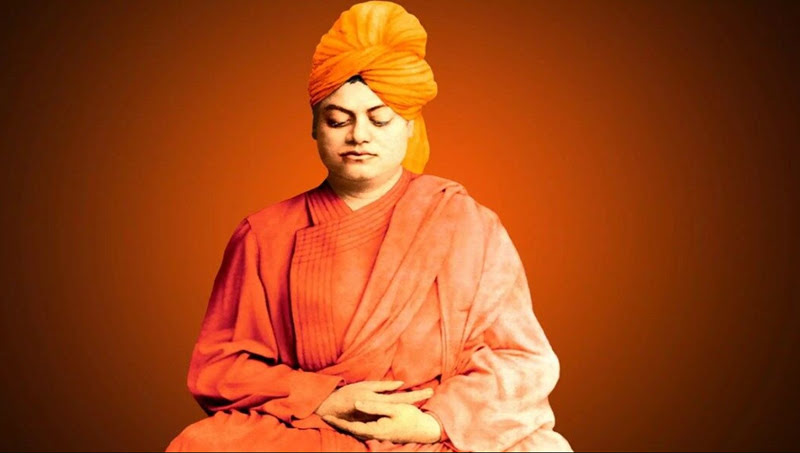It is celebrated on 12 on 12 January to respect the birth commemoration of Swami Vivekananda. Swami Vivekananda is a name that requires no kind of presentation. He is a powerful character who is credited with illuminating the western world about Hinduism. He addressed Hinduism in the Parliament of Religions in 1893 in Chicago and because of this an obscure priest of India unexpectedly jumped into distinction. National Youth Day is seen on 12 January to celebrate the birth commemoration of Swami Vivekananda.
Swami Vivekananda Biography
On May 1, 1897, Swami Vivekananda established Ramakrishna Mission for the benefit of humanity and one’s own salvation. Do you know his talks, compositions, letters, and sonnets are distributed as The Total Works of Swami Vivekananda? He never puts personalities before teaching universal principles. He had huge astuteness. We are always enlightened and awakened by his unique contributions. He was an otherworldly pioneer and social reformer.
Read More:-
Birth Date
Conceived Narendranath Datta, Swami Vivekananda (12 January 1863 – 4 July 1902) was an Indian Hindu priest, thinker, author, and strict instructor. He was additionally Ramakrishna’s most significant student. Swami Vivekananda is credited with advancing interfaith comprehension and hoisting Hinduism to the place of a huge global religion. Swami Vivekananda was an essential player in the acquaintance of Vedanta and Yoga with the Western world.
Swami Vivekananda Jayanti 2024
Swami Vivekananda Jayanti is observed annually to commemorate the birth of one of India’s greatest teachers. Swami Vivekananda was born on January 12, 1863. Swami Vivekananda followed Swami Ramkrishna Paramhansa and in the long run turned into a “sanyasi” or priest. Swami Vivekananda’s birthday is also celebrated as National Youth Day in recognition of the renowned educator’s belief in the nation’s youth.
Early Life
- On January 12, 1863, during the Makar Sankranti celebration, Swami Vivekananda was brought into the world as Narendranath Datta into a Bengali family in his familial house at 3 Gourmohan Mukherjee Road in Calcutta, the capital of English India.
- Swami Vivekananda was one of nine kin and came from an ordinary family. Vishwanath Datta, his dad, filled in as a legal counselor at the Calcutta High Court.
- Narendra’s grandfather, Sanskrit and Persian scholar Durgacharan Datta, left his family at 25 to become a monk. Bhubaneswari Devi, Swami Vivekananda’s mom, was a dedicated housewife. Both Narendra’s mother’s and father’s perspectives—progressive, logical, and devout—had an impact on his thinking and personality.
Since the beginning, Swami Vivekananda was keen on otherworldliness and used to perform contemplations before pictures of divine beings like Shiva, Rama, Sita, and Mahavir Hanuman. Swami Vivekananda was enchanted by priests and monks who meandered. As a small kid, Narendra was devious and fretful, and his folks habitually battled to monitor him.
Read More:-
Educational Life
- At eight years old, Swami Vivekananda joined at the Metropolitan Establishment of Ishwar Chandra Vidyasagar, where he went to class until his family moved to Raipur in 1877.
- Swami Vivekananda was the sole understudy to accomplish first-division marks on the Administration School confirmation test in 1879, following the migration of his family to Calcutta. At the General Gathering’s Foundation, Swami Vivekananda concentrated on Western rationale, Western way of thinking, and European history (presently known as the Scottish Church School).
- Swami Vivekananda breezed through the Expressive arts assessment in 1881, and in 1884 he procured a Four year education in liberal arts degree. David Hume, Immanuel Kant, Johann Gottlieb Fichte, Baruch Spinoza, Georg W. F. Narendra looked at works by Hegel, Arthur Schopenhauer, Auguste Comte, John Stuart Mill, and Charles Darwin..
He was captivated by Herbert Spencer’s theory of evolution, and he translated his book Education (1861) into Bengali via correspondence. Swami Vivekananda concentrated on Bengali writing and Sanskrit sacred texts notwithstanding Western scholars.
Foundation of Ramakrishna Math by Swami Vivekananda
Following Ramakrishna’s passing, his followers and admirers ceased helping them. Narendra and the other disciples were forced to move because of unpaid rent. Many of them adopted a Grihastha (family-oriented) way of life when they went back home. In order to accommodate the remaining disciples, Narendra made the decision to renovate a run-down house in Baranagar into a new math (monastery). The Baranagar Math’s rent was modest and was raised by “holy begging.” The math was transformed into the Ramakrishna Math’s first structure, a monastery for the Ramakrishna monastic order. Every day, Narendra and his followers would spend many hours engaging in religious fasting and meditation. Later, Narendra reflected on the monastery’s early years.
Read More:-
Death & Later Life
- On July fourth, 1902, Swami Vivekananda rose early, headed out to the religious community at Belur Math, and participated in a three-hour contemplation meeting. Before holding a meeting with colleagues to propose a future Vedic college at the Ramakrishna Math, Swami Vivekananda gave students lectures on the Shukla-Yajur-Veda, Sanskrit grammar, and yoga philosophy.
- At 7:00 p.m., Swami Vivekananda went to his room and asked that no one disturb him. He died while meditating at 9:20 p.m.
- According to his followers, Swami Vivekananda went through
